Three-Way Diverter Valve Options
Favorite diverter valves for gravity-fed greywater-harvesting systems are the Jandy valve and Pentair valve (very similar to the Jandy valve).
The FLO2 valve used to be included, but it is no longer available.
The following is meant as a supplement to the greywater-harvesting chapter and appendix of Rainwater Harvesting for Drylands and Beyond, Volume 2, 2nd Edition.
These valves enable you to direct greywater either to the landscape (if using greywater-compatible soaps that won’t harm your plants or soil) or the sewer/septic (if you are using products toxic to soil and plants such as chlorinated bleach or bubble bath; or if your soil is already saturated or frozen). Many states require the ability to direct your greywater to either the landscape or sewer/septic when installing a greywater-harvesting system. Both valves fit 2-inch (50-mm) diameter ABS or PVC pipe.
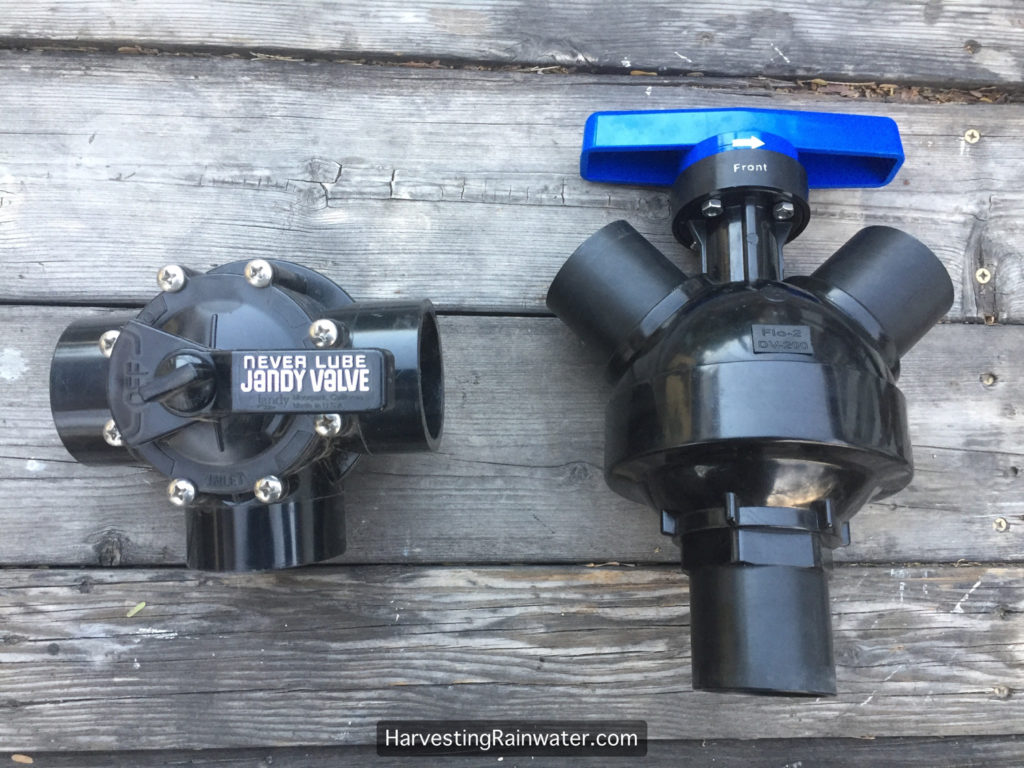
Jandy and Pentair valves are also available in 1.5-inch (37-mm) diameter pipe size and are typically found at pool and spa suppliers. They were not designed to be drain/waste/vent valves, but they work great for that purpose. However, as they have not been tested and approved by IAPMO (International Association of Plumbing and Mechanical Officials) for that purpose, some municipalities may not allow their use in permitted greywater-harvesting plumbing. Though the valves are tested and listed for higher performance conditions, such as pressurized pool and spa systems.
Building on that fact, collegues and myself worked with the City of Tucson to create an administrative policy allowing the use of Jandy and Pentair valves in permitted residential greywater-harvesting systems.
Get the full story and the policy here and use it as a template to change policy in your community.
FLO2 valves, available at www.flo2valves.com, have been tested and approved by IAPMO for any drain/waste/vent application – including any permitted greywater-harvesting plumbing, so they should be allowed anywhere for permitted greywater-harvesting plumbing.
NOTE: As of 12-2021, it seems the Flo2valve is not available – I hope this changes. Let me know if it does and I’ll edit this. Nonetheless, it can serve as inspiration for other manufacturers if it is no longer in production.
The FLO2 valve comes in either an ABS or PVC plastic shell with a CPVC internal ball. NOTE: As of 3-2021, the FLO2 valve no longer seems to be available. I have had no luck getting in touch with the manufacturer to confirm this, but I cannot currently find a distributor. Nonetheless, I am leaving this information up in case manufacture and availability resumes, or another manufacturer uses this as inspiration to develop a similar product.
Let’s take a closer look at each valve and some the unique characteristics that differentiate the two from each other…
The Jandy valve.
Note that one of the valve ports will always be the designated inlet (see “INLET” on the valve’s cover), and the other two will be the outlets. (You can change which is the inlet.)
Note that the nut in the center of the Jandy valve handle can be tightened down to lock the valve handle in place (maybe little kids or curious guests may mess with it), though I’ve never needed to do that as of yet.
NOTE: a very similar three-way valve to the Jandy valve is the Pentair 3-way valve
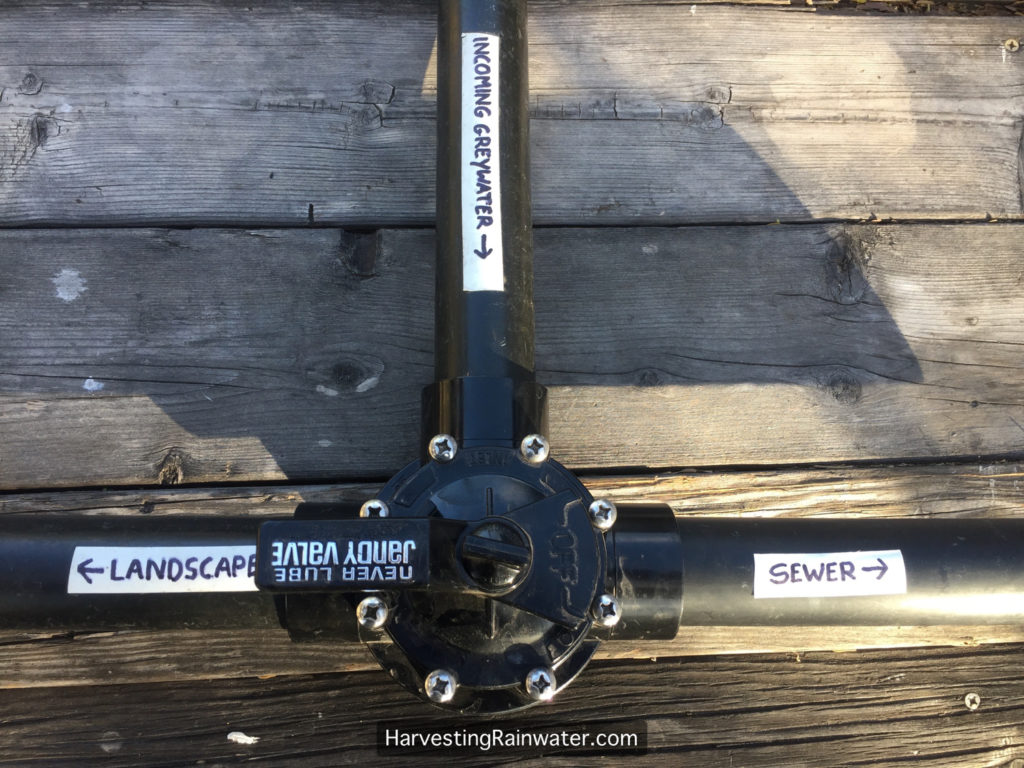
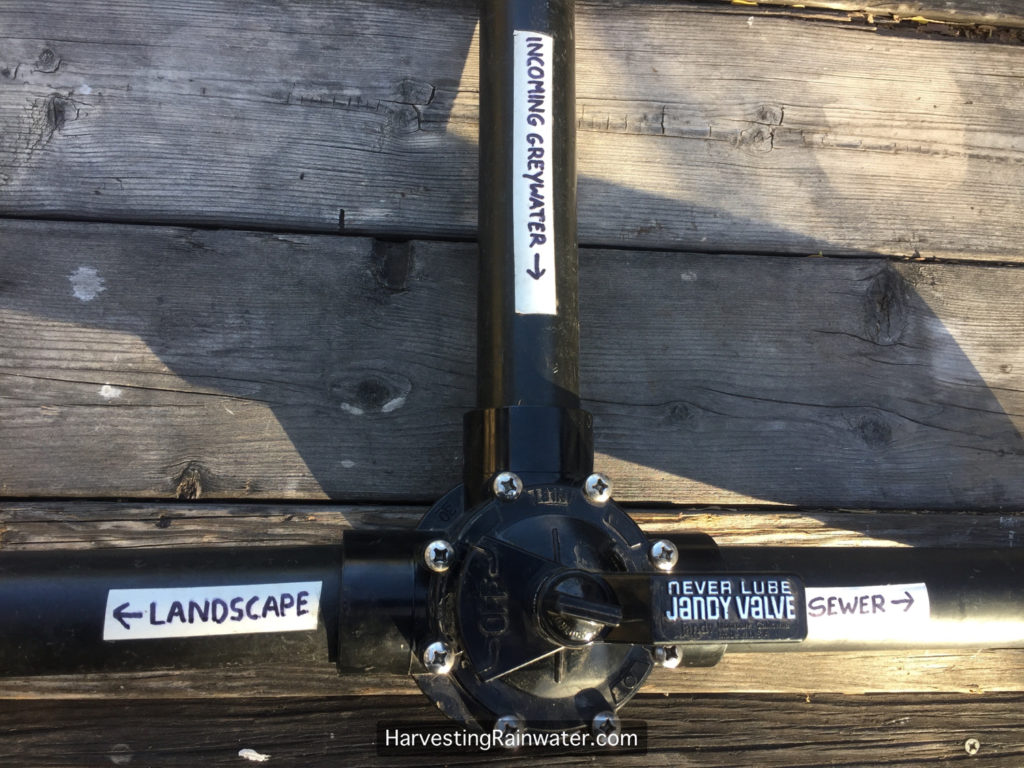
You can change the orientation of the inlet on the Jandy valve.
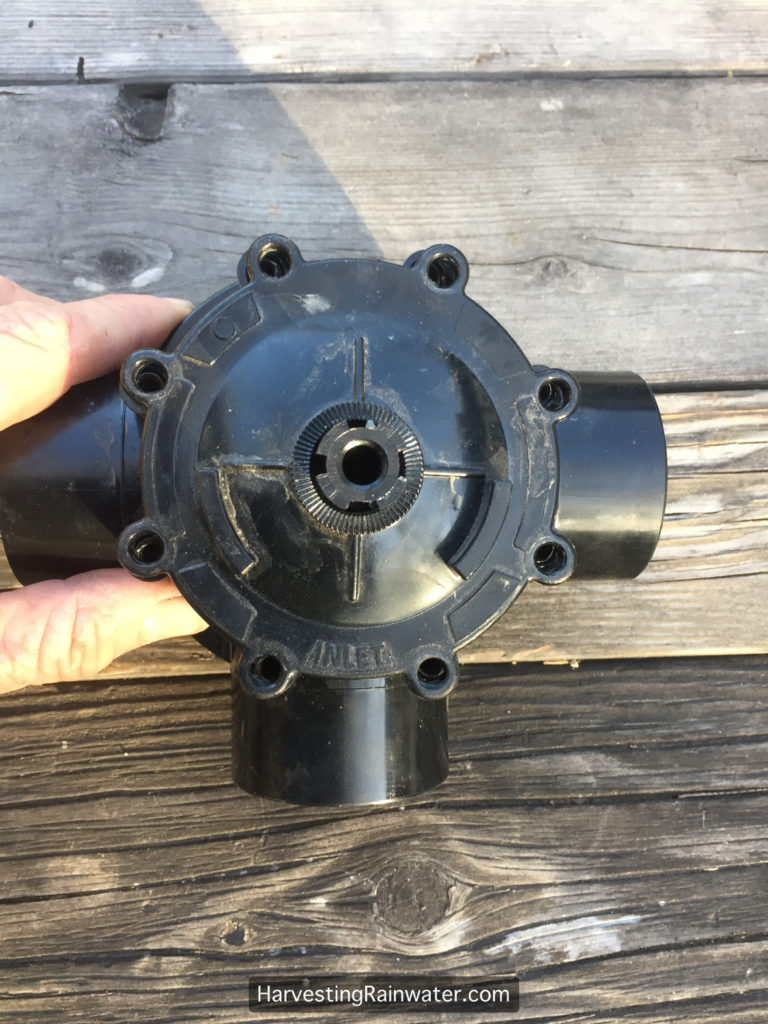
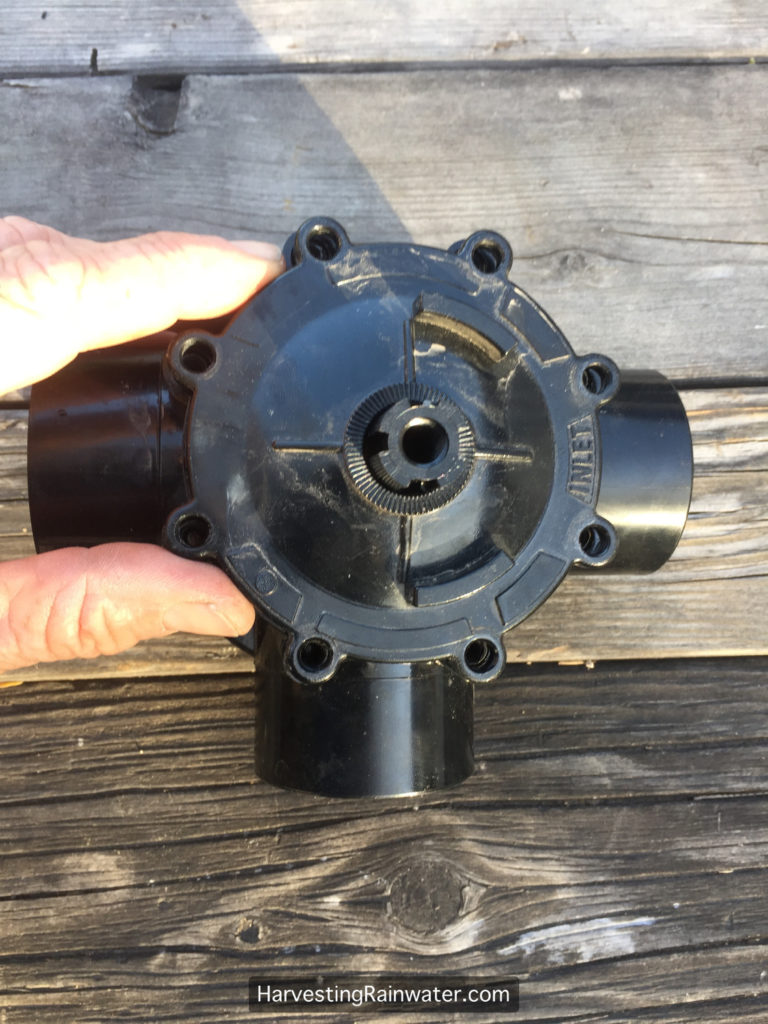
Note that you cannot close or turn off the Jandy valve inlet. You can close one of the outlets only.
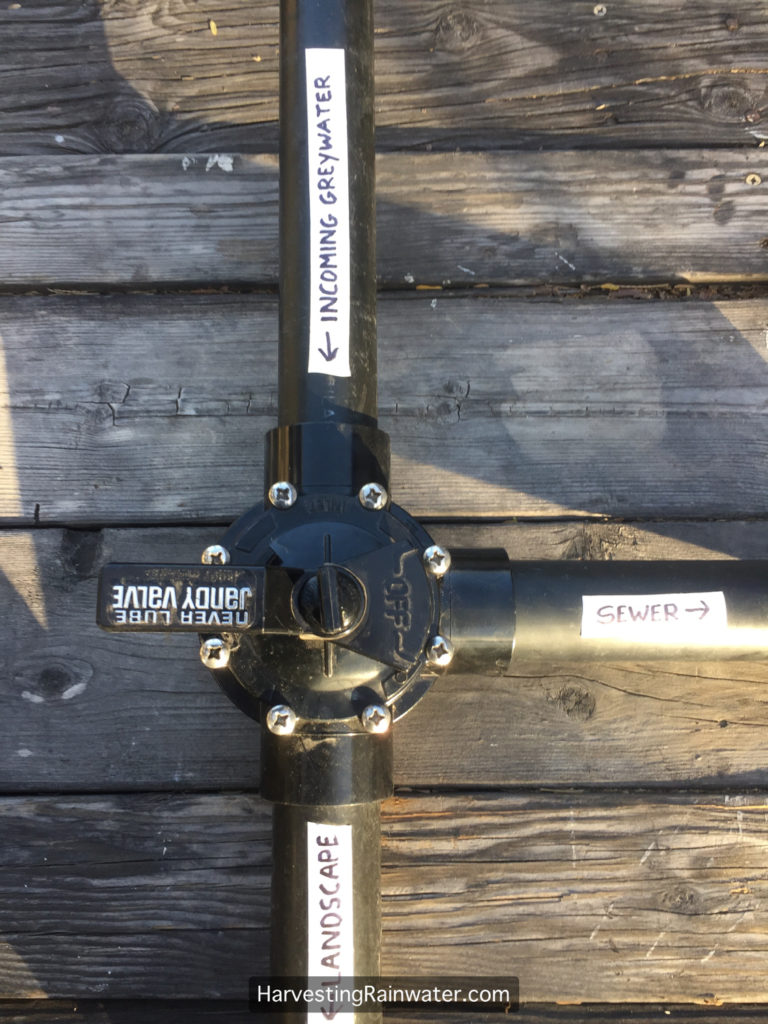
If you look inside the Jandy valve you can see some rough surfaces. It would seem that hair and other objects in greywater could get caught up on this. But I’ve never had a problem with that, and I don’t know anyone who has. And if the valve did clog, you could take it apart to clean it.
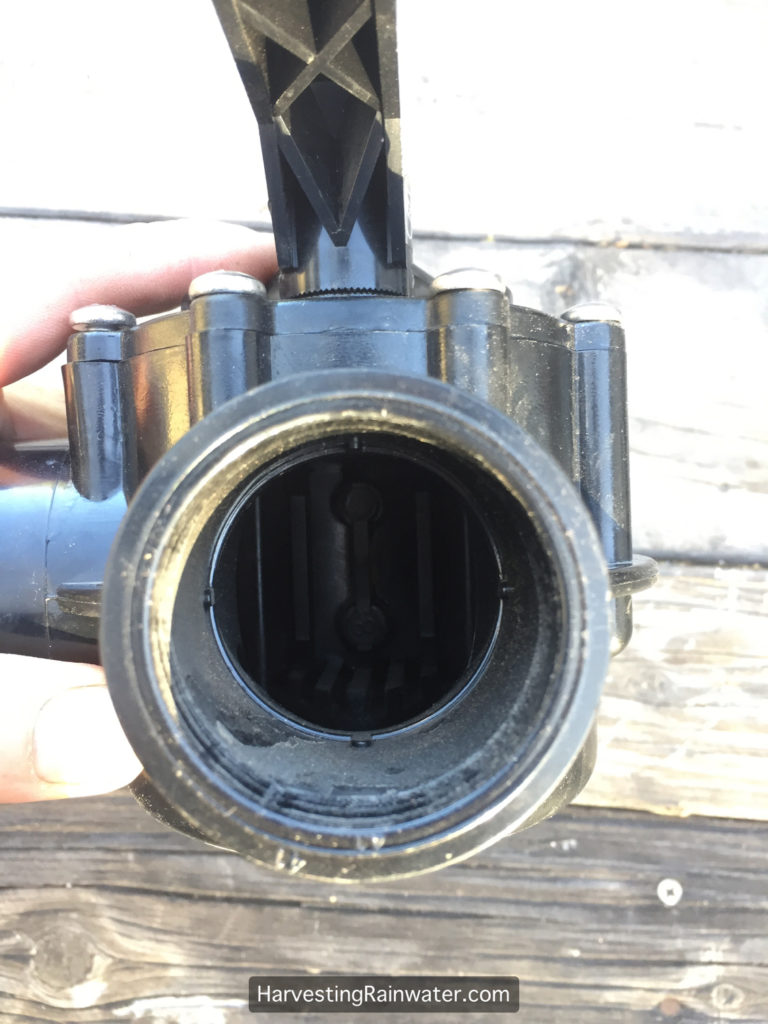
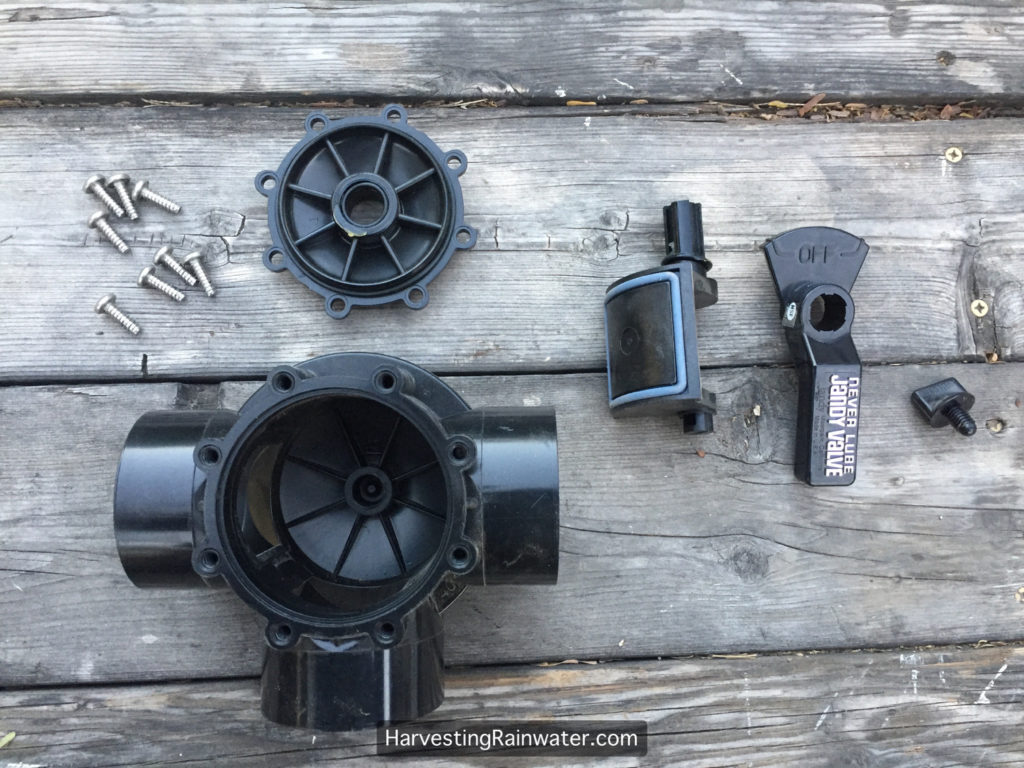
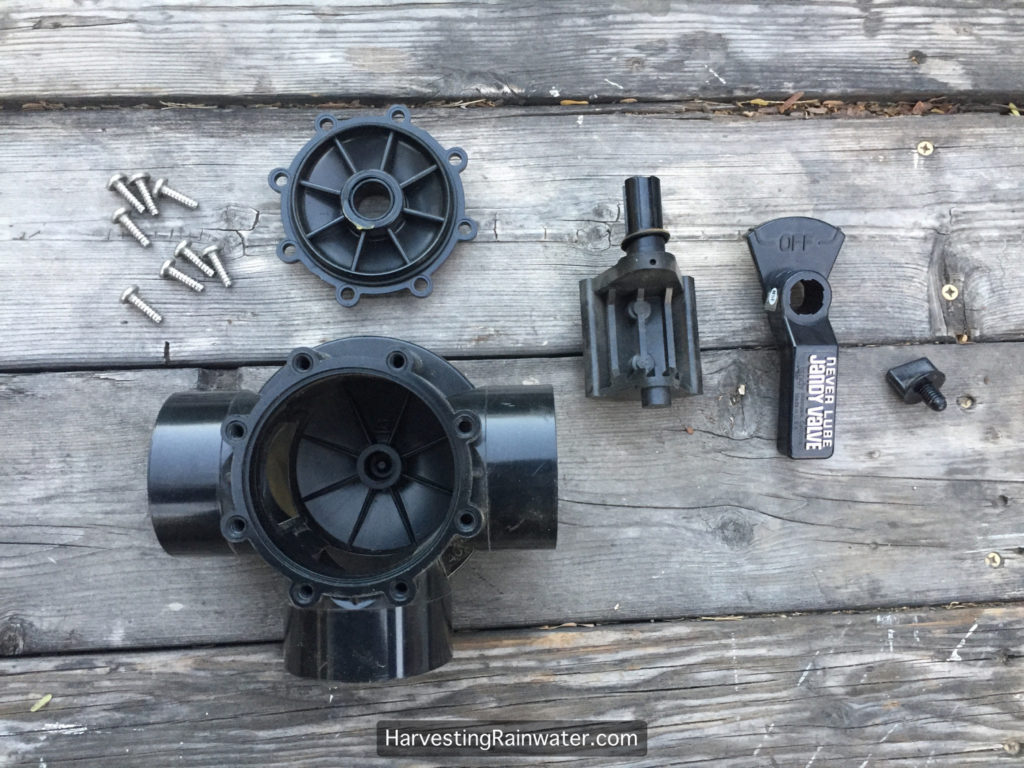
The FLO2 valve Greywater flowing through the FLO2 valve takes only an easy 45-degree turn to exit an outlet, unlike a Jandy valve, which requires the greywater to turn 90 degrees. The inlet is always at the side opposite the handle.
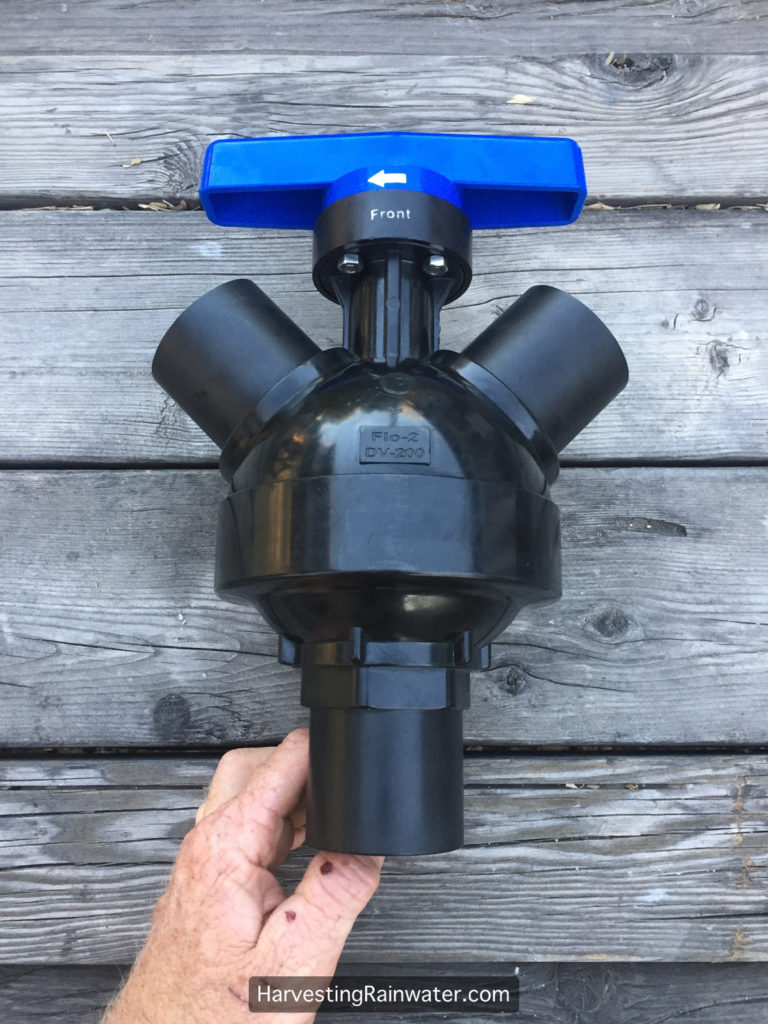
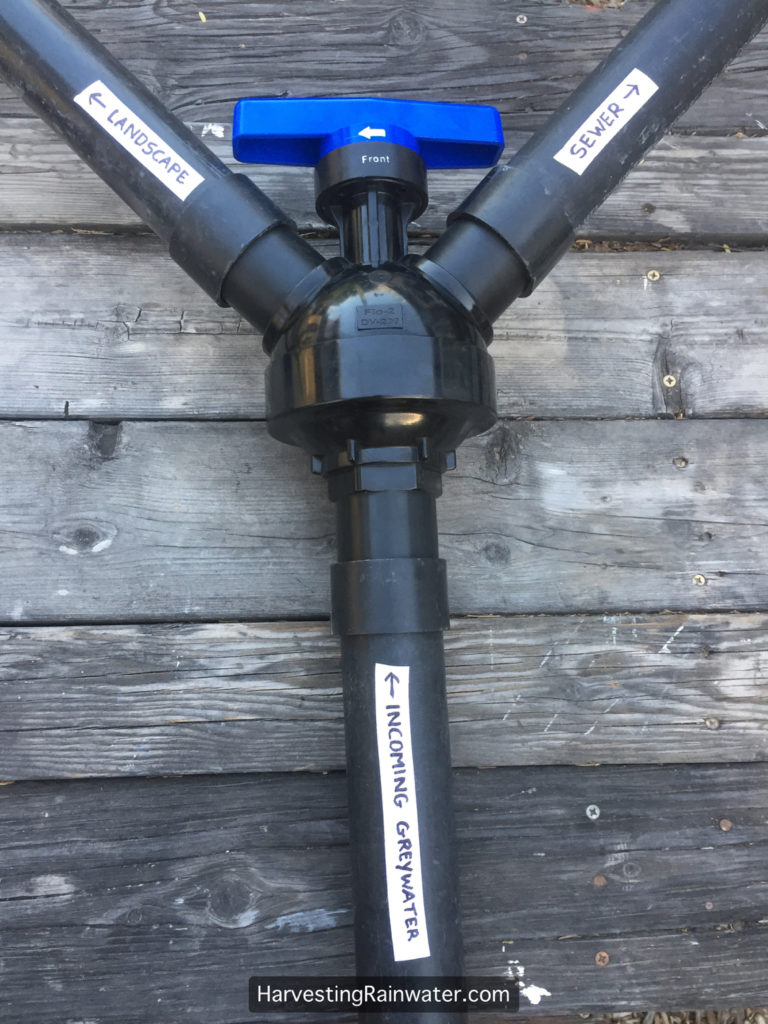
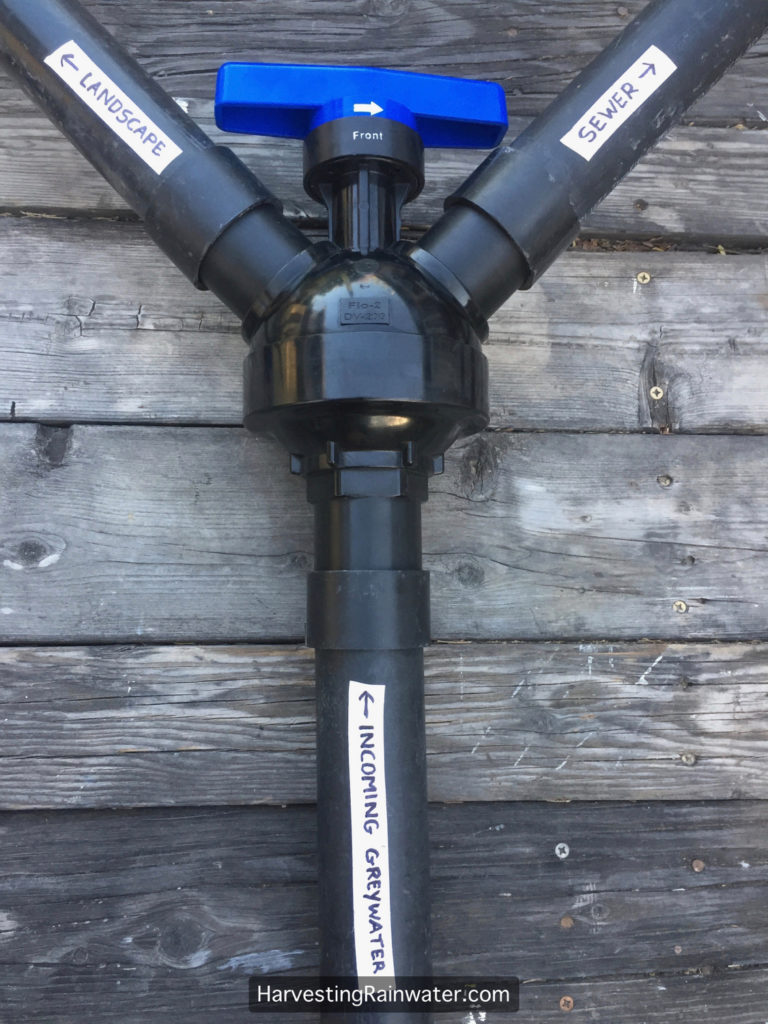
If you don’t want to glue the valve to the incoming and outgoing pipe (maybe you want to be able to easily remove the valve at some point and use it elsewhere), you can use no-hub couplings, sometimes called “shielded transition pipe couplings” or “specialty couplings.”
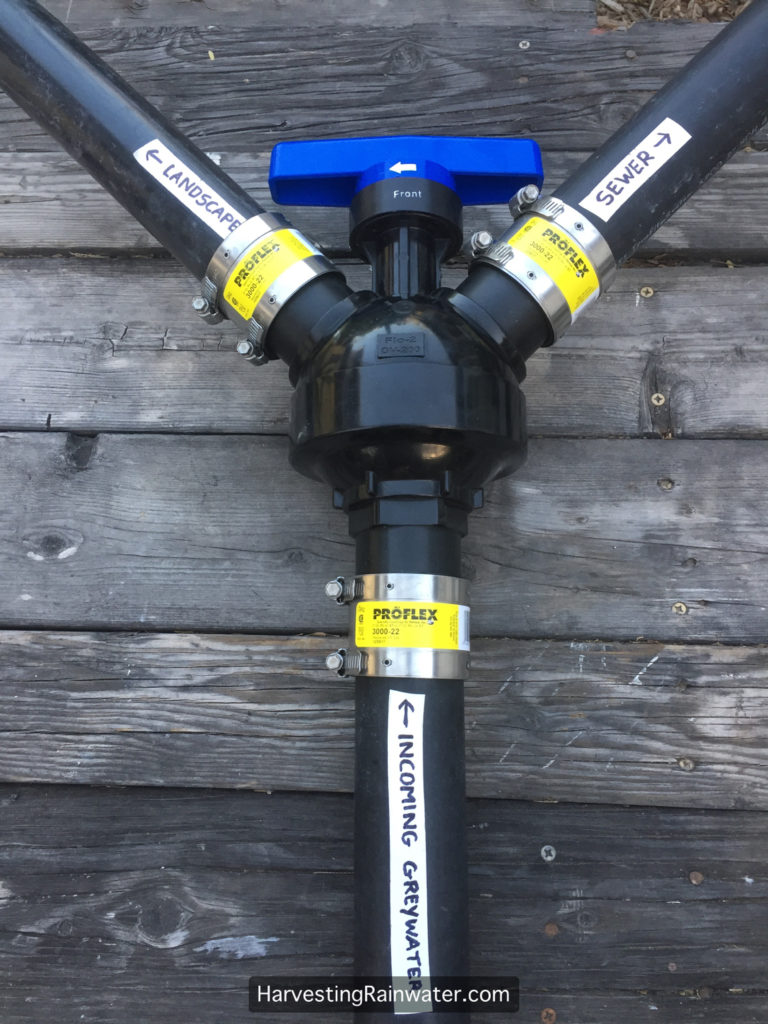
You can change the orientation of the FLO2 valve’s handle with a 90-degree adapter, then create an extension arm of whatever length you like from 1.5-inch diameter ABS or PVC pipe. I really like this, because it enables you to put the valve under a floor where there is a crawl space, then run just the handle up through the floor for easy access. For example, you could have the handle accessible in a bathroom so you can conveniently direct the greywater to the landscape (if using soaps that are biocompatible or safe for your soil and plants) or the sewer (if using bubble bath, salts, or soaps that would harm your soil and plants).
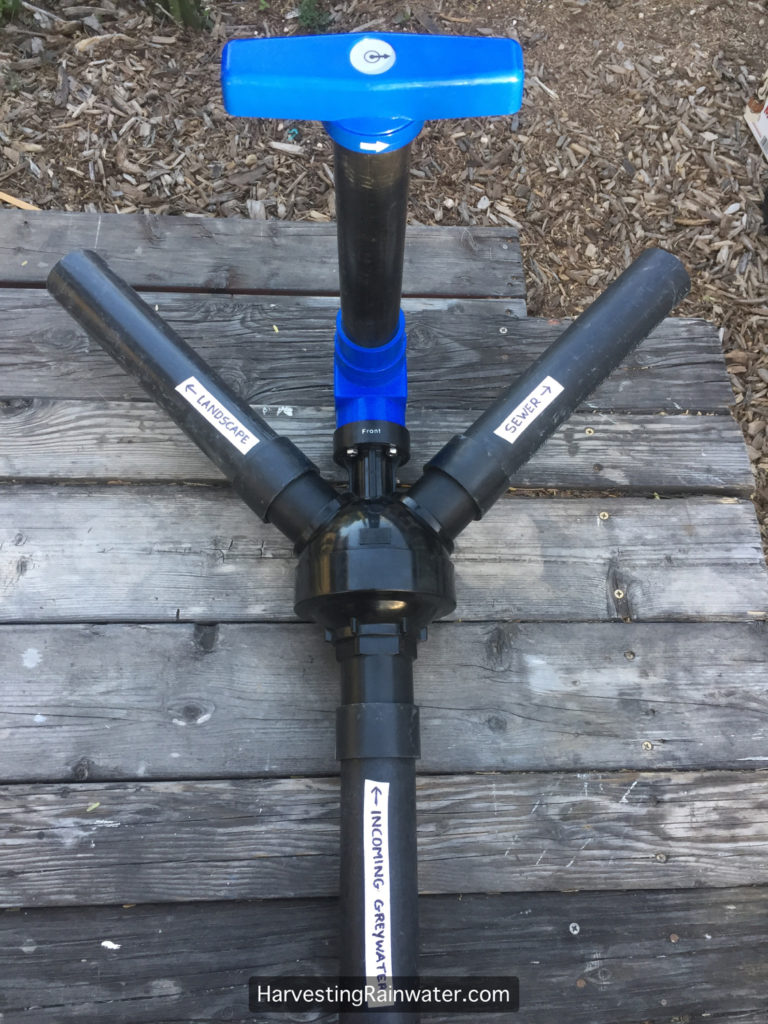
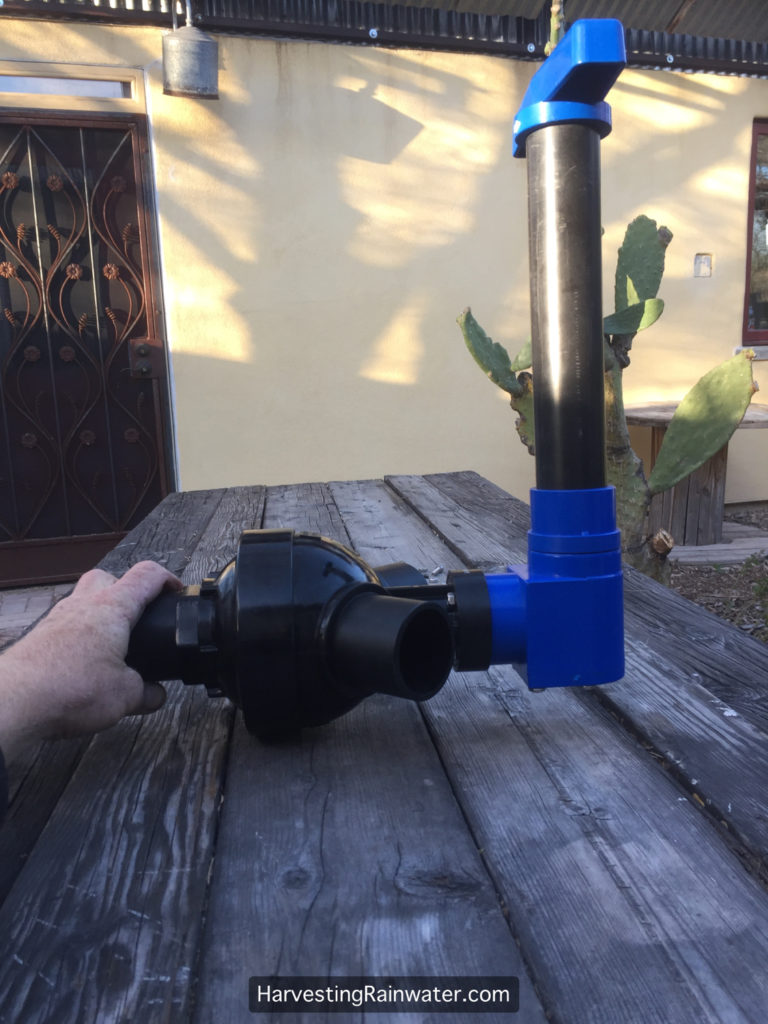
How to attach the FLO2 valve’s 90-degree adapter. Remove the grey cap with the flow direction arrow on the valve’s handle. This was a bit of a pain when I did this, as the cap was difficult to pry out of place; the manufacturer said they are reworking this part to make this easier.
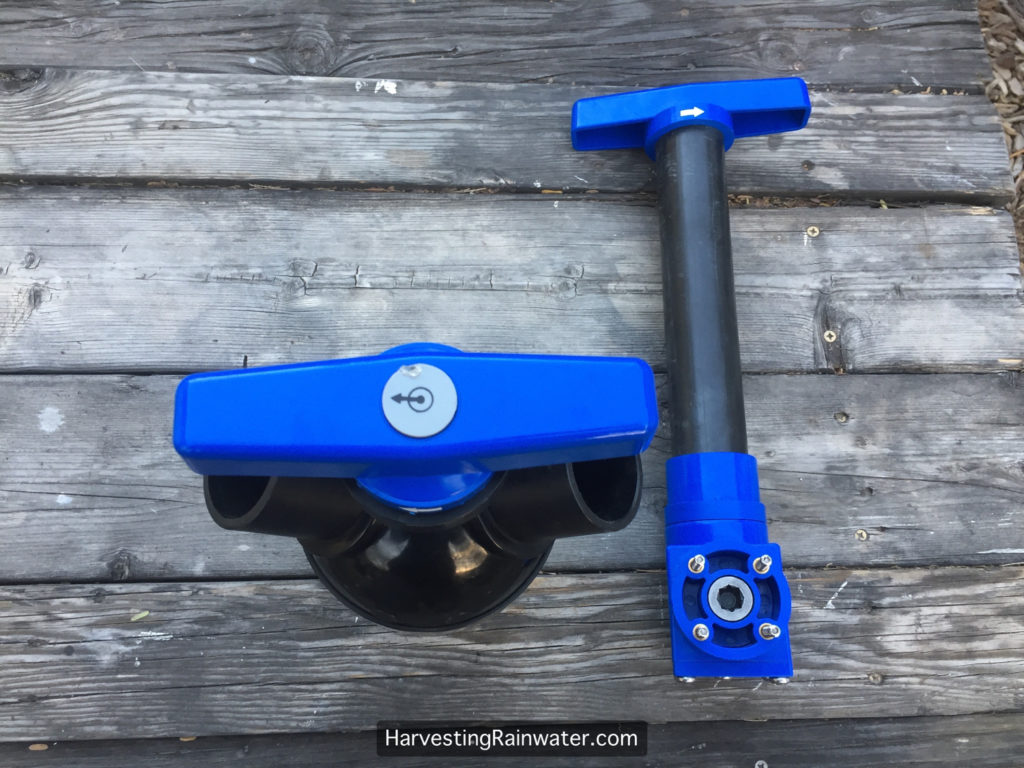
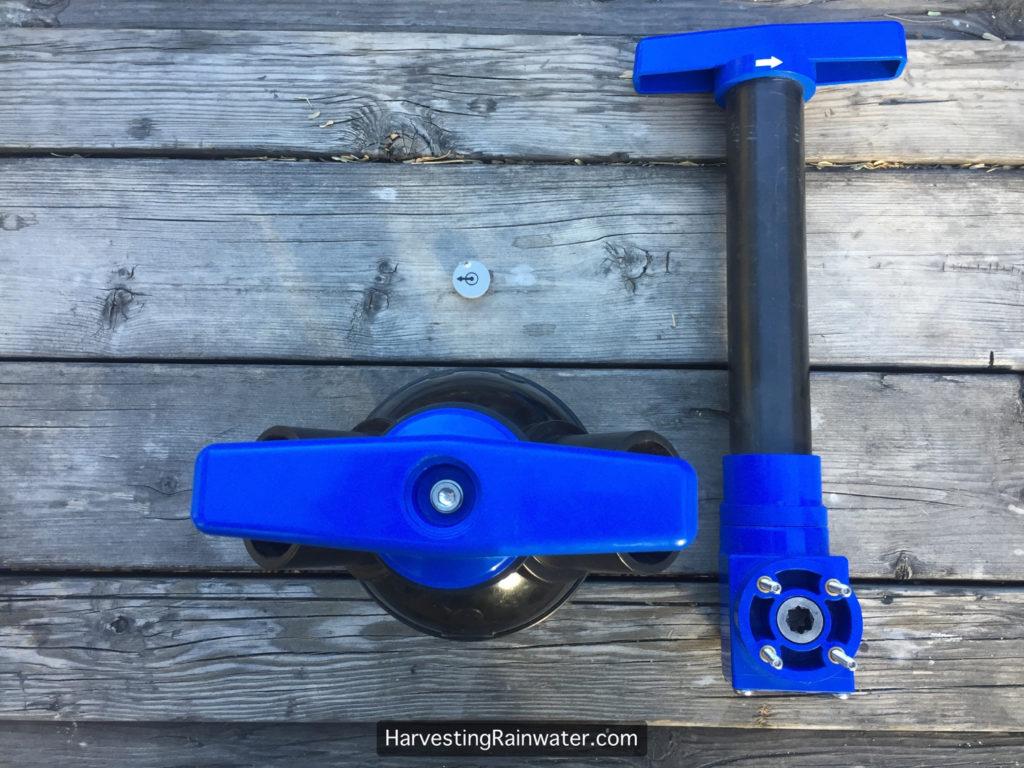
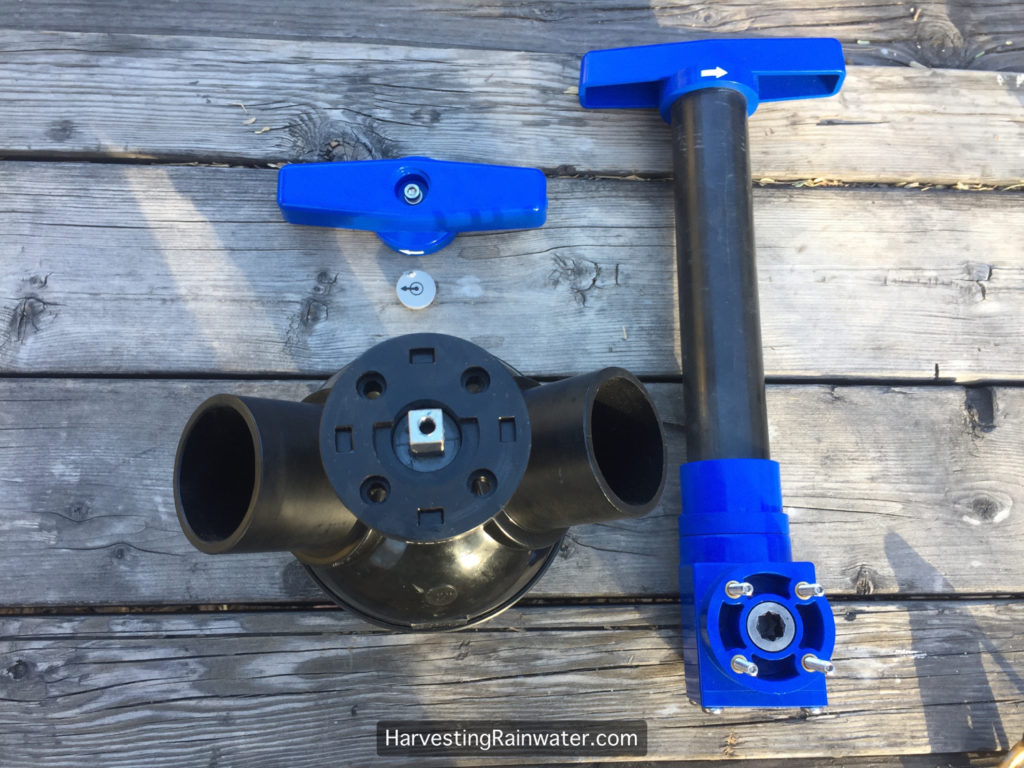
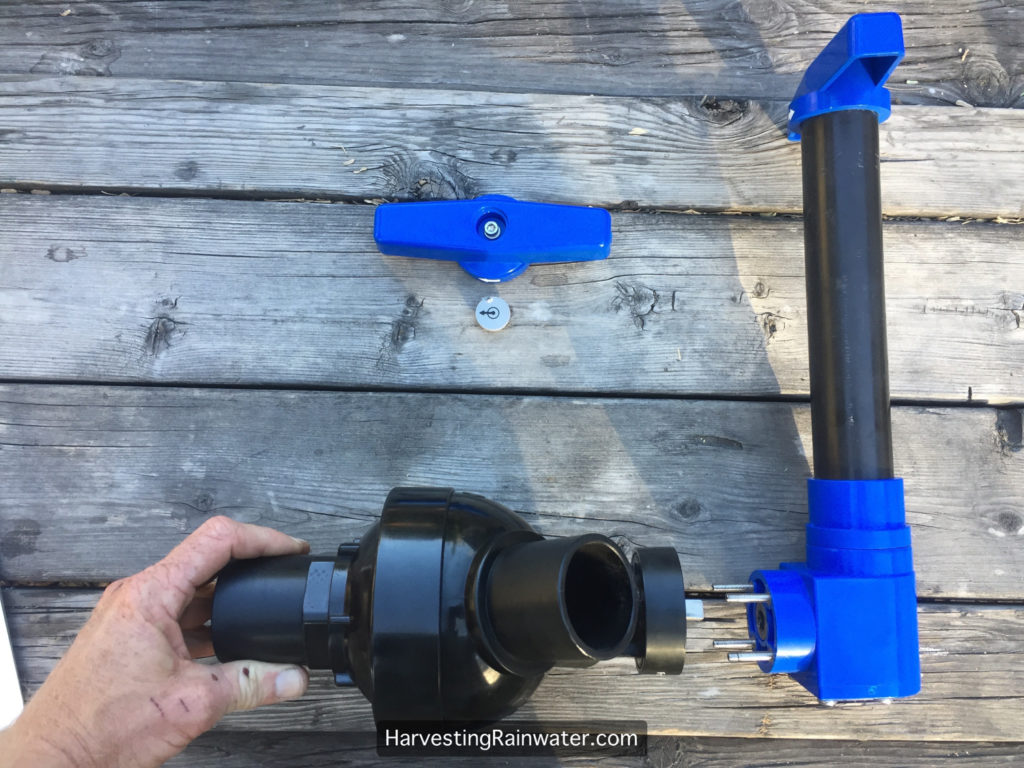
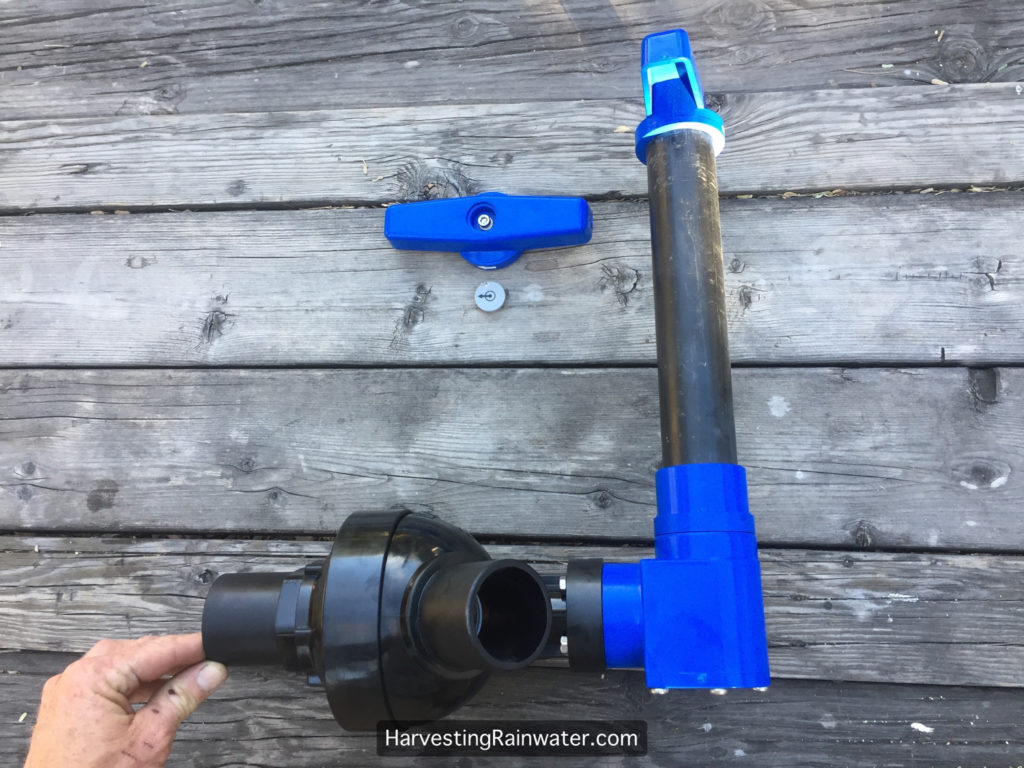
Note how smooth the interior of the FLO2 valve is. No potential for clogs.
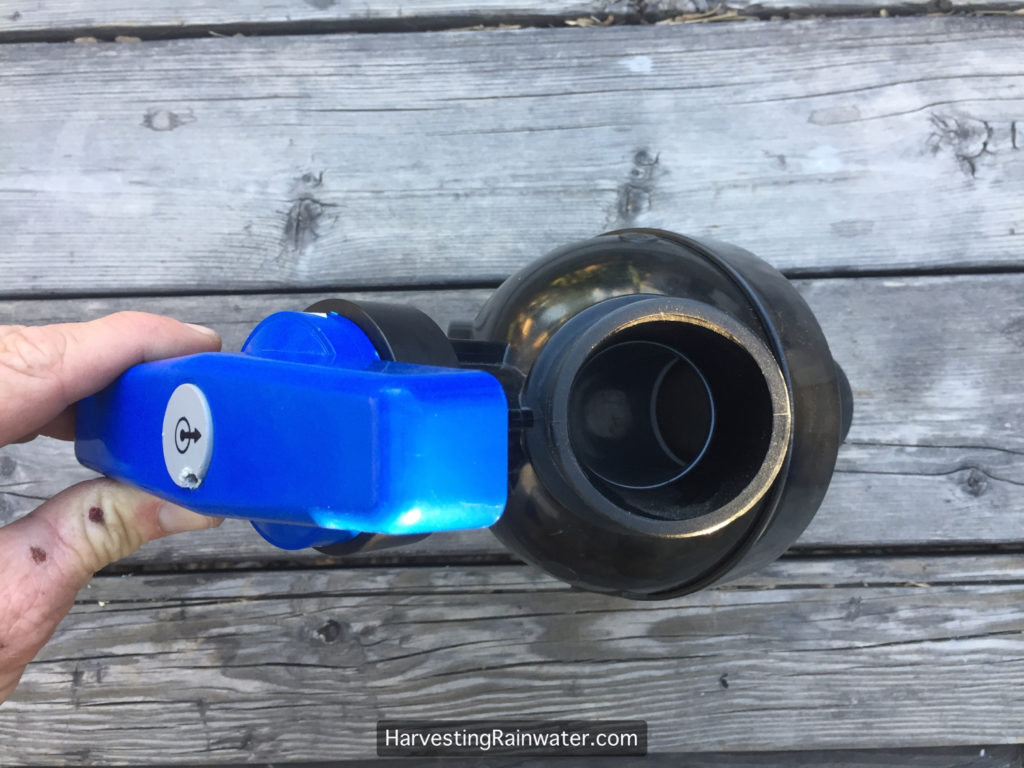
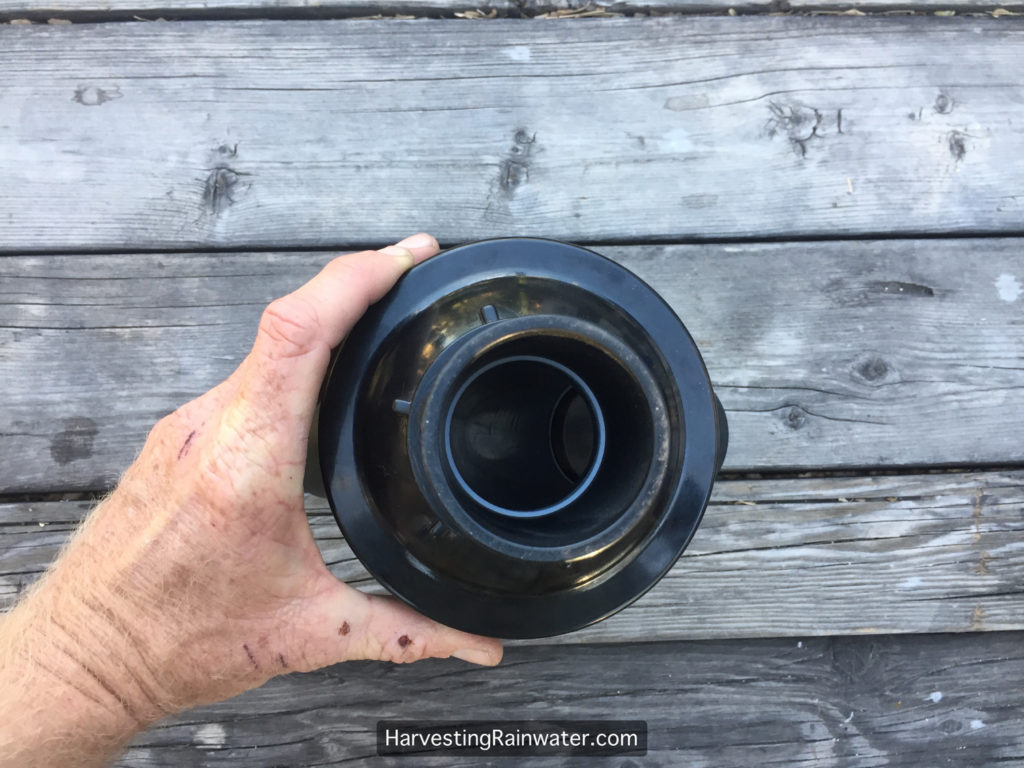
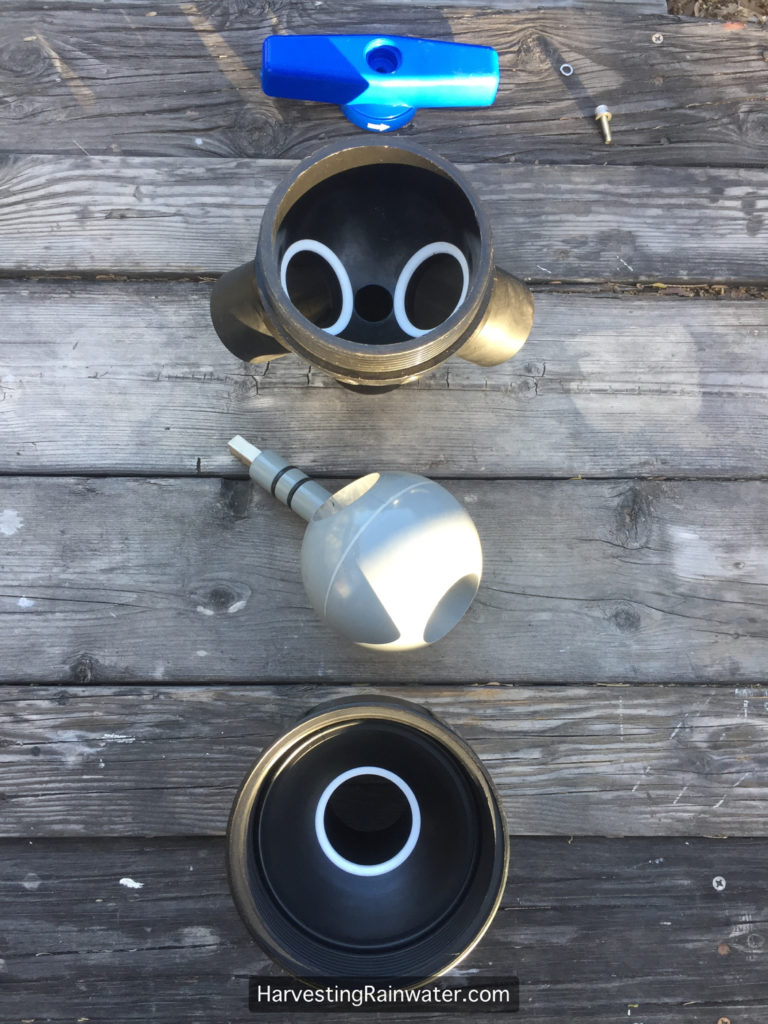
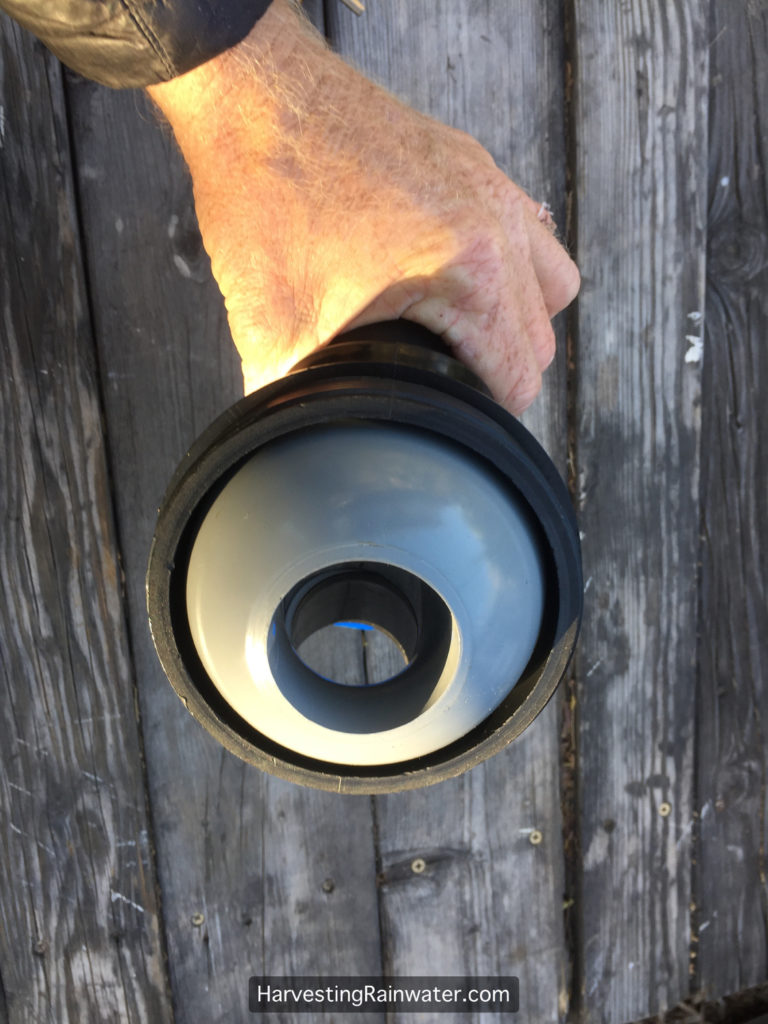
See here for a video on three-way diversion valves
For more…

Volume 2
Check out the greywater harvesting chapter and kitchen resource drain appendix of Rainwater Harvesting for Drylands and Beyond, Volume 2, 2nd Edition – available at deep discount direct from the author, Brad Lancaster.
